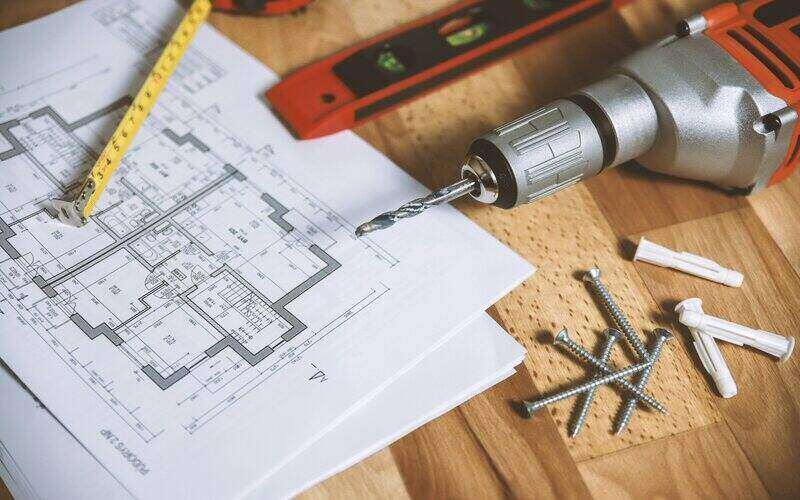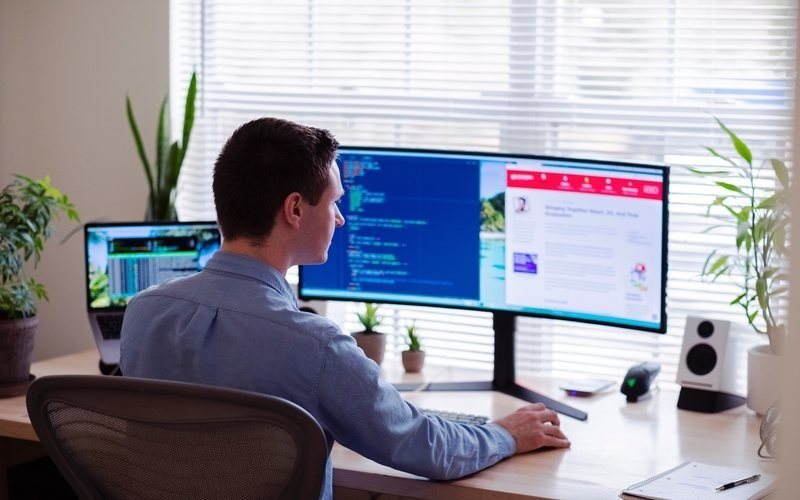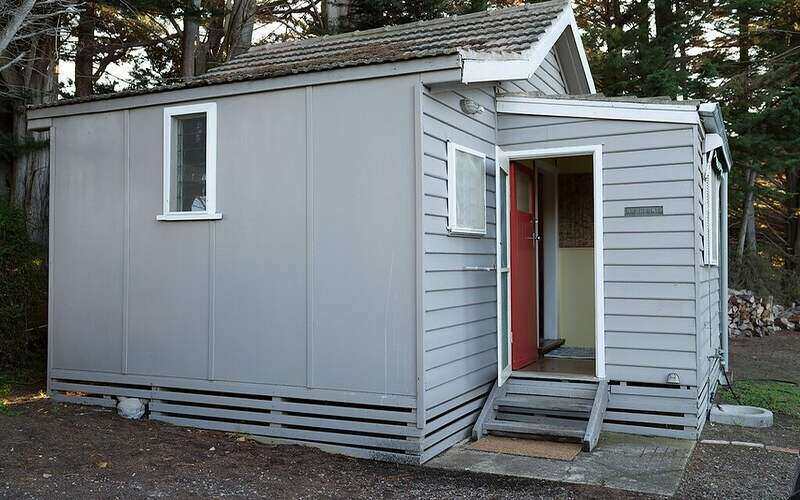Australia has the most swimming pools per capita of any country in the world. At the latest official count in 2023, one in seven Australians - more than 3.1 million people - lived in a home with a swimming pool or spa. That’s 14% of the population but among the other 86%, there’s likely to be more than a few looking on enviously at the neighbours and measuring up a corner of their own backyards.
No matter how loud the calls are in your household, if you are considering putting in a pool, you also need to consider the time and money it will cost long after you have paid to install it. But if you’re still thinking of taking the plunge, let’s consider some options.
In-ground swimming pool
The most popular type of swimming pool in Australia is in-ground which, of course, requires excavation. There are a few different types of in-ground pools: fibreglass, concrete, or vinyl-lined.
It should be remembered excavation will add to the price of any in-ground option and the cost can vary depending on the size you want, the ease of accessing the site, the type of soil you have, and whether the diggers encounter rock, tree roots, or pipes. Any unexpected surprises can affect where you put the pool and even what size you can go for. It’s wise checking with the neighbours who already have pools to learn a bit more about what could be below-ground in your backyard.
Generally, pool companies will factor in excavation costs in their quotes. Now what you have to decide is what type of pool you’ll go for.
Fibreglass
Fibreglass pools generally cost around 20% less to install than concrete pools of a similar size. According to Leisure Pools, the initial cost of an average fibreglass pool is around $30,000-$45,000 but can be up to $80,000. By the way, don’t take the estimated figures in this article as gospel. The cost of a pool varies widely according to the size, style, design, where you want it, installation issues, and the region you live in.
A fibreglass pool shell comes in one piece and is dropped into an excavated hole in the ground. Again, this makes access a key factor. The installers will need to get the pool to where the hole is and any issues getting the shell through or around your home can send the price skyrocketing.
Backyards without access for materials and equipment could mean you may have to hire a crane to carry the shell over the roof of your home to drop into the backyard excavation - or ask the neighbours if you can have access from their properties.
Fibreglass pools generally come in pre-moulded shapes and sizes, so you won’t have too much flexibility on the design, size, and look of the pool. Also, not all fibreglass is created equal. The quality of the fibreglass shell will also influence the price but generally, fibreglass pools are durable and have a gel coating that prevents the growth of mould and algae.
The shell will fade over time but should last 10-15 years before it needs to be recoated. That said, you can get around 15-20 years out of a fibreglass pool if it’s maintained over its lifespan, even without resurfacing.
According to Leisure Pools, fibreglass pools can also be the best option if you’re keen on a saltwater pool because they are better able to withstand the corrosion that saltwater can cause over time. Other benefits of fibreglass pools are that they can be installed and ready to use relatively quickly. They also don’t have the hard edges and surfaces that some concrete pools can have.
Concrete
Generally, the most expensive option for in-ground pools is a concrete pool which is created by spraying either gunite or shotcrete to line an excavated hole. A concrete pool can be customised to suit your space and your design preferences so you can choose your own size, shape, depth, and added features such as steps, gradual entries, shelfs, and the like. You can also choose your finish such as tiles, pebblecrete, or old-school blue paint.
According to Leisure Pools, the upfront cost of a concrete pool can be anywhere from $50,000 up to more than $100,000, depending on the size and design and, of course, the other unknown variables we’ve already covered.
Concrete pools take much longer to install as it’s imperative the concrete cures before any water is added. This process can take between four to six weeks, a long wait when you’re keen to jump in. Concrete pools may need resurfacing every 15 years or so but even without it, you should be able to get 40-plus years out of a well-installed concrete swimming pool.
Vinyl-lined
Vinyl pools get their name from the vinyl sheet used as the final layer in the pool’s construction. Vinyl liners are commonly associated with above-ground swimming pools, but thicker, more robust versions can also be used for in-ground pools.
Vinyl-lined pools offer the design advantages of a concrete pool but generally cost less upfront than other in-ground pool options. International pool company Latham says the starting cost of a vinyl pool is around $50,000. Unlike the requisite pale blue liners of old, modern liners come in myriad patterns and colours, including tile and slate-look versions that appear very much like the real thing.
Although vinyl-lined pools can be cheaper to install than other in-ground options, the vinyl lining is not as durable as the harder surfaces of fibreglass and concrete pools. The liners may need to be replaced every five to ten years but that depends on how they’ve been cleaned and maintained.
According to Leisure Pools, vinyl pool liners cost between $4,500 and $6,000 (without the labour cost to install them) depending on the size of the pool. This is generally cheaper than resurfacing options for fibreglass and concrete pools, but a few liners over the lifetime of the pool will add considerably to its cost in the long run.
Above-ground swimming pool
Above-ground swimming pools are less common in Australia but are still around due to their affordability and DIY installation benefits (although there are companies that will do the lot for you). Above-ground pools don’t come with excavation costs which keeps their prices down considerably.
Sometimes they can offer a good starter option. Homeowners can try an above-ground pool to ‘test the water’ of pool ownership and then later decide to install an in-ground pool. Other above-ground pool owners might have a site not suited to an in-ground pool.
Many above-ground swimming pools are not designed to be permanent and can be easily dismantled when the kids leave home and no one is using the pool anymore. Other styles can be more long-lasting.
The cheapest options can be bought from Bunnings or Kmart for as little as a few hundred dollars, but you generally get what you pay for. For longer-lasting above-ground pools, you may consider vinyl or modular pools.
Vinyl
Vinyl pools offer a more permanent (but still affordable) option. Compass Pools estimates the starting cost of a decent quality DIY install above-ground vinyl-lined pool at less than $10,000. The lining of these pools generally has an estimated lifespan of six to ten years. While vinyl offers a smoother surface for swimmers, it is less durable and can be more easily damaged than fibreglass or concrete options.
Each time a vinyl liner is damaged, it may need to be completely replaced so if you’re likely to have the neighbourhood kids in and out of your pool, keep this in mind. Above-ground vinyl pools are best viewed as a discount version of a pool, but it can save you thousands on labour and installation costs and can keep you just as cool in summer.
Modular
Modular pools are designed to be self-supporting. That means they can sit above ground, half in the ground, or completely in the ground. They can be a good choice if you’ve got a sloping block that would require considerable excavation for an inground pool.
They are pre-made and can come in a variety of shapes and sizes. According to Compass Pools, they can cost anywhere from $20,000 to $40,000 or more and are often designed to be ‘plug and play’, meaning installation is usually pretty quick.
The overall cost depends on your design and style choices and the material you go for. Modular pools can have a longer life and generally require less ongoing maintenance than an above-ground vinyl pool.
Financing a pool
There are several ways you can finance the installation of a pool. You may be able to refinance your home loan to borrow against the equity in your home, but many Australians pay for pools via personal loans, either secured or unsecured.
In basic terms, a secured loan is secured against something you own like your home, car, or even a boat. Unsecured loans have no security attached to them and tend to have higher interest rates than secured loans.
Below is a selection of personal loans with the lowest interest rates on the market:
Lender Car Loan Interest Rate Comparison Rate* Monthly Repayment Interest Type Secured Type Early Exit Fee Ongoing Fee Upfront Fee Total Repayment Early Repayment Instant Approval Online Application Tags Features Link Compare Promoted Product Disclosure
Promoted
Disclosure
Promoted
Disclosure
Ongoing costs of pools
But wait, once you’ve chosen what pool you’ll likely go for, there are more costs you’ll need to consider.
Fencing
There are strict regulations in Australia around pool safety - and for good reason. Tragically, backyard swimming pools accounted for 85% of the drowning deaths of 549 Australian children aged under five in the two decades to 2022.
Once your pool is in, you will need to fence the pool area and there are time limits on how much time you have to do it. You’ll need to budget for pool fencing as a compulsory cost of putting in a pool.
All states and territories, except Queensland, follow the Australian Standard AS1926.1 - Safety Barriers for Swimming Pools. Queensland has its own standard in place that’s a modified version of the Australian standard. Additionally, other states and territories may have specific regulations. You need to ensure your fencing is compliant with the requirements of your jurisdiction.
The main considerations are:
-
Pool fence dimensions
-
Building material
-
Construction of gates and latches
-
Surrounding matter and objects
-
Maintenance responsibilities
As a general indication, a glass pool fence encompassing the average-size pool in Australia could cost around $5,000. The price varies greatly on what material your fence is built from and how long and high it is. Make sure your installer complies with Australian standards so your pool and its fencing can pass certification with a pool safety inspector.
Water
Those of a certain age will remember the days when water was free to anyone who had a tap but in many parts of Australia, it’s not anymore. The cost of filling your new pool needs to be taken into account, particularly if it’s a big one.
If you’re in an area with a city water supply, you’ll likely have to pay an excess water charge for filling your pool. That can be around a few hundred dollars for anything more than 60,000 litres worth depending on the charge of your local water authority. Filling your pool with tap water is generally the cheapest option.
But if you’re in a drier part of the country where there’s not an abundant water supply, you may need to pay to have water delivered which can cost more than $1,000 for larger pools. You generally pay by the truckload so do your calculations to see if it’s going to be worth your while for a smaller pool.
It’s estimated pool owners can also spend anywhere between $20 to $500 a year topping up their pools to replace water lost to natural evaporation.
Filtration and chemicals
Once you fill your pool with sparkling, clean water, then it’s up to you to keep it this way. Before you put your pool in, hopefully you and your pool installer have spoken about what pool cleaning system is best to use.
Pool filters (pool pumps) are essential and generally go for up to $1,000, or more for variable-speed ones which we’ll touch on below. These generally run on electricity which can add considerably to your power bills. A normal backyard pool in Australia can account for up to a quarter to a third of a household’s energy costs so be prepared for bill shock if you don’t have a solar system to shoulder the load. The cost of running one for an average-sized pool is estimated at $110 a month in summer and $80 a month in winter.
There are a number of pool chemical systems on the market these days including chlorine, pool salt, other mineral salts, and several other alternatives. Depending on what you go for and how large your pool is, these can cost you from a couple of hundred dollars a year in chemicals. Throw in the cost of a creepy crawly, a pool heater, possibly a pool ozone system and you can see where it’s heading.
Everyday maintenance
Of course, you can outsource general pool maintenance to any number of companies for a fee and let them take charge of keeping your pool clean and well-maintained. This can set you back anywhere between $600-$2,000 a year depending on the size and type of your pool.
Pool upkeep
Fibreglass pools tend to have the lowest ongoing costs. Once your fibreglass pool is in the ground, you may need to get a servicer to polish the surface above the waterline. You may also need to resurface a fibreglass pool after 10 to 15 years or when there are signs of cracks, leaks, blisters, or discoloration. They can last considerably longer though if they’ve been well maintained. Resurfacing costs vary according to the size of the pool but can be between $5,000-$7,000.
Concrete pools generally require more chemicals to prevent bacteria build up. They can also be more likely to lose their water-tight seal and may require resurfacing sooner, depending on what finish your pool has. Plaster surfaces will need resurfacing more often while pebble interiors can last much longer. Again, the cost depends on the surface and the size of the pool.
Pools with vinyl lining may require more servicing and upkeep than fibreglass and concrete pools. Compass Pools estimates a 10-year lifespan before a vinyl pool will need a new lining, but it could be sooner depending on wear and tear and how well the pool has been maintained.
Saving money on maintenance
Pool maintenance might seem like somewhere you could cut corners and save money. However, Poolwerx CEO Nic Brill says that neglecting to do the basics usually means bigger expenses around the corner.
“We know cost of living pressures are challenging many families right now and cancelling pool servicing appointments can save money in the short term, but pools cannot just be ‘turned off’ and regular maintenance will prevent big bills in the future,” Mr Brill said.
There are several products that might be worth considering that can make running your pool more cost-efficient.
Pool cover
Uncovered pools can lose up to 10,000 litres of water a month through evaporation. This means losing chemicals as well which need to be replaced to maintain healthy water quality. Using a pool cover can prevent more than 99% of water evaporation. A cover or blanket also helps to retain heat naturally, which can save on energy costs for heated pools and keep you using you pool for more months of the year.
Solar heating
One of the most cost-effective ways to heat your pool is to use solar panels. A pump circulates pool water through heated panels on the roof until the water is at the temperature you are after. On a sunny day, solar panels can produce more than four times the energy of a heat pump or gas. The cost comes in installing the system, anywhere between $2,500 to $5,000.
Variable speed pumps
We’ve already covered how much pool filters (pool pumps) can rack up in energy costs. Poolwerx says this is because many people use single-speed pumps which aren’t nearly as energy-efficient as variable speed ones. These can run at lower speeds when you don’t need maximum circulation and be pre-set to perform as required. Single-speed pumps are cheaper up front but are generally more expensive to run over the long term.
Does a pool add value to your property?
It’s a good question, but the answer is: it depends. When you sell your home down the track, you may be hoping your backyard pool will bump up your home’s value. There is some research on this with one analysis suggesting a pool can lift your home’s value by up to 7% but it comes with a qualifier. It will ultimately come down to how much a prospective buyer values a pool.
Those who don’t care about a pool will see it as a negative because of the time and money involved in maintaining it when they are unlikely to use it that much. But for other prospective buyers, it might be the defining feature of the property that entices them to put in an offer.
Here’s what can influence the equation:
Climate
First and foremost, the value of a pool is driven by the climate of where you live. Year-round warm weather will generally make a pool more attractive to prospective buyers
According to data from Roy Morgan, regional Queensland has the highest rate of pool ownership in Australia at around 24%. This includes the Gold Coast, the Sunshine Coast, and other major regional centres. Of the capital cities, 19% of Brisbane residents, 17% of Perth residents, and 16% of Sydney residents have pools. This compares with only 9% in Melbourne and 8% in regional Victoria.
These figures give some indication of how prospective buyers in those markets are likely to view and prioritise a pool. If you live in the southern parts of the country, a pool may not add as much value or appeal to your home.
Beachside equals poolside
Waterside living is a strong drawcard for many prospective buyers and those willing to pay extra for a slice of paradise near the beach or waterways could be more likely to see value in a pool as well.
Pools can be particularly sought after in coastal locations where beach swimming is limited during stinger season, for example, or for other seasonal or safety reasons.
Location
In addition to climate and location, the demographics of your property’s suburb or locality will also impact the value a pool can add to your home.
If your home is close to schools and public transport in a ‘safe’ suburb, you are more likely to sell your home to a family. Roy Morgan research shows Australian families with children aged five to 11 are more likely to value a pool.
Pool lovers
According to property listing website Domain, the word ‘pool’ has ranked as its top search keyword for a fourth year in a row with the number of homes with a pool listed on the site rising by almost 4% over the previous 12 months.
It’s not only families with kids who love a pool these days. Previous Roy Morgan research has shown they are also highly valued by people whose lives centre around their home, including empty nesters, as well as so-called “bluechip” buyers and “self-made lifestylers”. Some buyers also like the aesthetic of a pool as a feature even if they’re not big pool users.
Savings.com.au’s two cents
Put in a pool for yourself and your family, not for your property value or to keep up with the Jonses. If you’re unlikely to use a pool, hold onto your money and investigate whether a smaller spa or water feature might better suit your aquatic aspirations. Pools are great on hot days, but they come with a considerable upfront cost and years of ongoing expenses.
When you get a pool, you also take on the responsibility of ensuring its safety for young children, even if you don’t have any of your own. States and territories have their own pool safety regulations, and you need to be aware of compliance requirements. If you are going to be renting out your property or selling it at any time, you will likely require a pool safety certificate to put it on the market so ongoing maintenance is essential.
Quotes for swimming pools can vary widely so do your research on what best suits your needs, your particular property, and your budget. Always go with a reputable installer and be clear on what the cost will be up front. Alas, the internet is littered with pool installation horror stories with backyards left in disarray and homeowners out of pocket with no prospect of a dip anytime soon. As with most big investment decisions, doing your homework, as well as your calculations, is essential.
This article was initially published by Aaron Bell in 2019 and updated by Denise Raward in 2024.
Image by Mia Anderson via Unsplash

Ready, Set, Buy!
Learn everything you need to know about buying property – from choosing the right property and home loan, to the purchasing process, tips to save money and more!
With bonus Q&A sheet and Crossword!
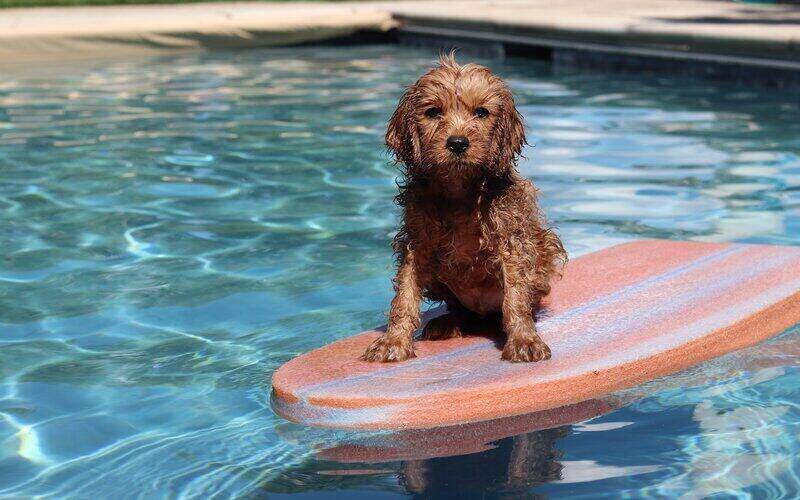


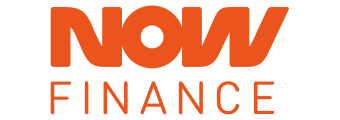

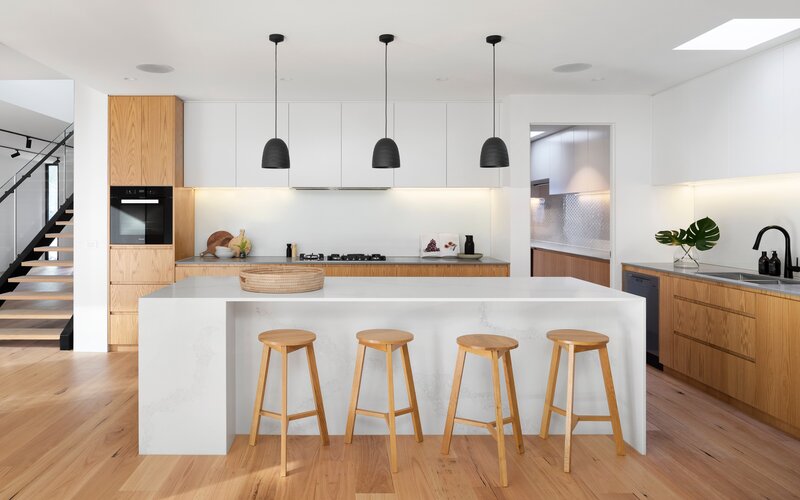
 Rachel Horan
Rachel Horan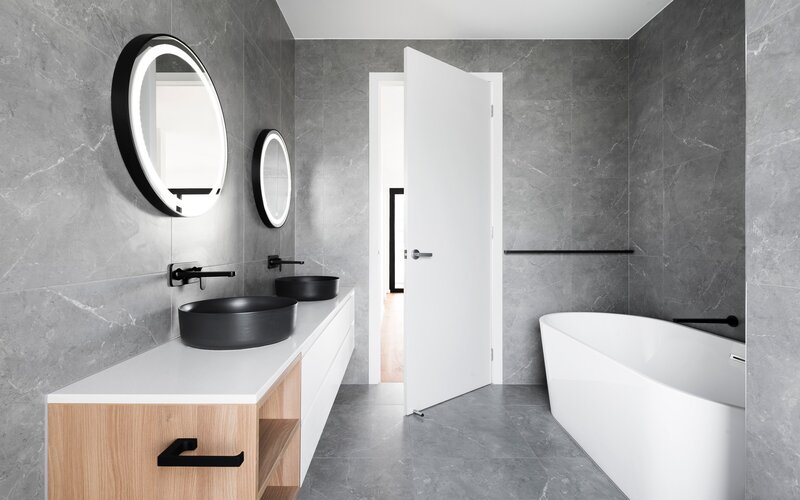
 Harry O'Sullivan
Harry O'Sullivan